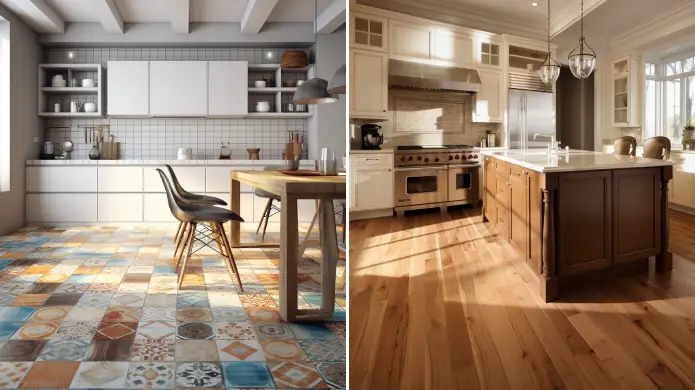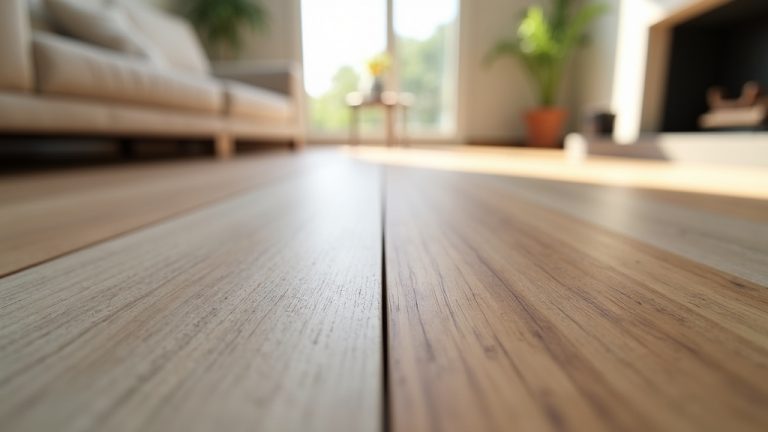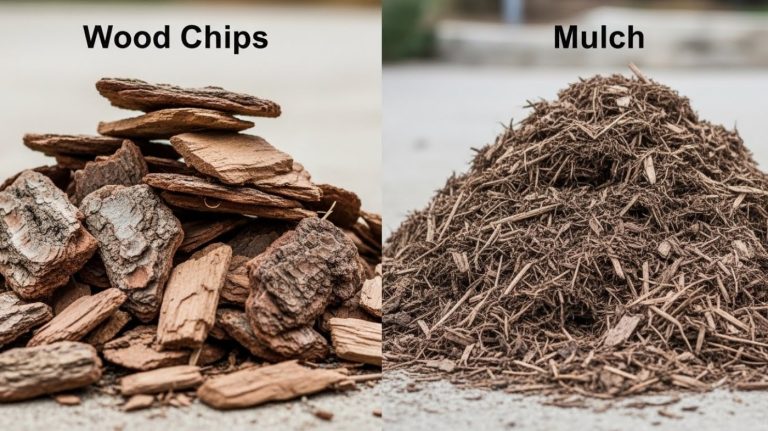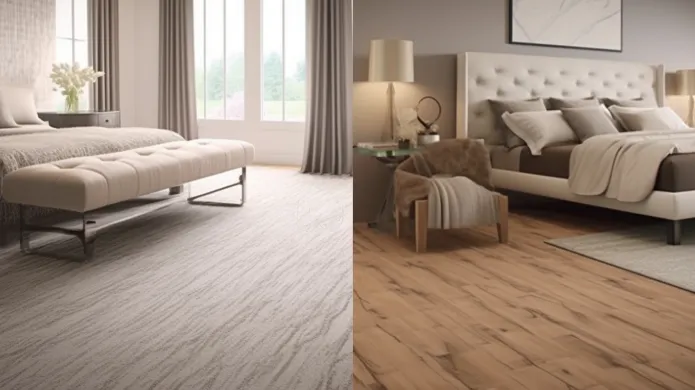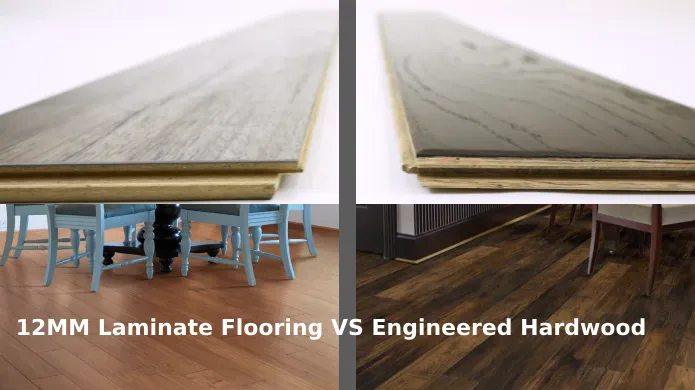Tile Versus Hardwood In Kitchen: 6 Actual Differences
Making a wise decision about flooring material for your kitchen is a crucial decision that can impact the space’s overall functionality, aesthetics, and maintenance. Two popular options often considered are tile and hardwood.
Tiles are renowned for their exceptional durability, resistance to water, stains, and scratches. This makes them well-suited for kitchen environments prone to spills and moisture.
In contrast, hardwood floors offer a timeless aesthetic but are more susceptible to wear and tear. They can be prone to scratching and denting, especially in high-traffic areas.
Here we will explore the practical differences between tile and hardwood in the kitchen, their pros-cons and some general faqs so you can make an educated decision.
Differences Between Tile Versus Hardwood Floor in Kitchen
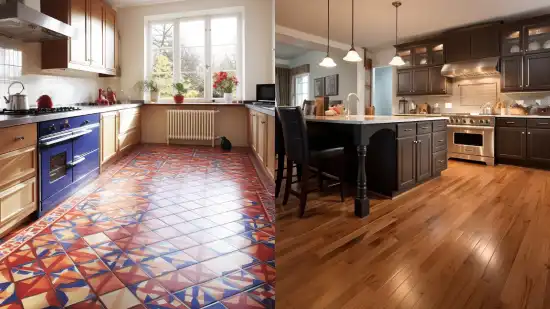
There are several key points when considering tile versus hardwood floors in your kitchen.
- Material composition
- Durability and maintenance
- Comfort and noise
- Aesthetic appeal
- Installation and repairs
- Cost
Let’s look a little deeper into each of these differences.
No 01: Material Composition
Although hardwood floors are made from natural wood, tile floors are typically made from materials like ceramic, porcelain, or natural stone.
This difference in material composition significantly impacts the overall look and feel of your kitchen.
Tile floors, with their diverse range of options, offer endless possibilities for creativity and customization. Whether you choose ceramic, porcelain, or natural stone, you can select from various sizes, shapes, and designs to match your kitchen decor perfectly.
On the other hand, hardwood floors possess an elegance and warmth that can’t be replicated. The natural grains and textures of the wood create a cozy and inviting atmosphere in your kitchen.
No 02: Durability and Maintenance
To keep your floors looking their best, regular maintenance is key.
Regarding durability, both tile and hardwood floors have their own strengths. Tile floors are highly durable, resistant to water, stains, and scratches. With regular sweeping and mopping, they can maintain their appearance for years.
However, the grout lines between tiles can accumulate dirt over time, requiring more thorough cleaning.
Meanwhile, hardwood floors are more likely to be scratched and dented in high-traffic areas. They are also sensitive to water, spills, and moisture, necessitating immediate cleanup to prevent damage. Regular sweeping and occasional refinishing are necessary to preserve their beauty and longevity.
No 03: Comfort and Noise
Standing on tile floors for long periods can be uncomfortable due to their hardness and lack of cushioning. The tiles’ rigid surface can strain your feet and legs, leading to fatigue and discomfort.
In contrast, hardwood floors provide a more comfortable surface to stand on for extended periods. The natural flexibility of wood allows it to absorb some of the impact from your body weight, providing a slight cushioning effect.
This can alleviate some pressure on your feet and joints, making standing for long periods more bearable.
Additionally, tile floors tend to reflect sound, creating a louder and more echoic environment in the kitchen. Conversely, hardwood floors absorb sound better, resulting in a quieter ambiance, which can be particularly beneficial when cooking or entertaining guests.
No 04: Aesthetic Appeal
When considering the aesthetic appeal of your kitchen, you should explore the design options, patterns, and colors that tiles and hardwood can offer.
Tiles provide a wide range of possibilities, allowing you to create intricate designs and add visual interest to your kitchen. From geometric patterns to mosaic artwork, tiles offer endless creativity.
Alternatively, hardwood floors exude a timeless elegance and warmth that can enhance the overall aesthetic of your kitchen. The natural grains and rich tones of hardwood can complement various interior styles, whether you prefer a rustic farmhouse look or a sleek modern design.
With hardwood, you can achieve a classic, sophisticated ambiance that will always stay in style.
No 05: Installation and Repairs
If you’re considering installing tile or hardwood, you should understand that both options require labor-intensive installation and may require repairs in the future.
Regarding installation, tile floors require precise measurements, leveling, and grouting. It can be a time-consuming process, but the end result can be stunning.
Then again, hardwood floors also require professional installation to ensure a seamless and durable finish. While the installation process may be similar to tile, hardwood planks can be sanded and refinished if they get damaged, helping to extend the lifespan of the flooring.
However, larger repairs or replacements may still require significant effort.
No 06: Cost
Regarding cost, ceramic tiles are generally more budget-friendly than hardwood floors. The affordability of ceramic tiles makes them an attractive choice for many homeowners.
In contrast, hardwood floors tend to be pricier upfront due to the cost of materials and installation. However, it’s important to remember that hardwood floors are considered a long-term investment that can add value to your home. They can potentially increase the resale value and appeal of your property.
What type of hardwood is in the kitchen?
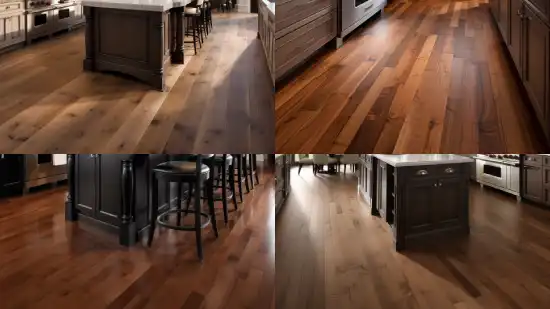
There’s a wide range of hardwood options available for kitchens, each with its own unique characteristics and benefits.
- White oak is a popular choice due to its hardness and resistance to wear and tear. It can withstand the demands of a busy kitchen while still maintaining its beauty.
- Maple is another excellent option, known for its strength and durability. It has a smooth, uniform appearance that adds a touch of elegance to any kitchen.
- Pine or walnut could be the perfect choice if you prefer a softer and more rustic look. Remember that they may be more prone to damage over time.
Is hardwood good for kitchen cabinets?
Using hardwood for kitchen cabinets is a popular choice due to its durability and resistance to wear and tear. In the kitchen, cabinets are subjected to constant use and abuse. From pots and pans being slammed shut to spills and splatters, your cabinets must withstand it all.
That’s where hardwood comes in. Hardwoods like maple, oak and cherry are known for their toughness and ability to resist dents and scratches. They can handle the daily wear and tear of a bustling kitchen.
On the other hand, softer woods like pine and alder may not hold up as well and may show signs of wear more quickly.
Is marble or tile better for the kitchen?
With its high porosity and robust crystalline structure, marble can be polished to create a stunning shine. However, its porosity also means it is more prone to staining and damage from moisture.
On the other hand, tiles have a lower porosity, making them ideal for high-moisture areas like kitchens and bathrooms. They are easy to clean, durable, and come in various styles and colors.
Ultimately, choosing marble and tile for your kitchen flooring depends on your preferences and lifestyle. If you prioritize aesthetics and are willing to put in extra effort to maintain the shine, marble may be the right fit. However, if durability and ease of maintenance are your top concerns, tile might be the better option.
Which type of tile is best for the kitchen?
When deciding on the best type of tile for your kitchen, consider factors like durability, maintenance, and style preferences. Natural stone and porcelain are both excellent options to choose from.
Natural stone tiles, such as granite or marble, offer your kitchen a luxurious and timeless look. They are incredibly durable and resistant to heat and moisture. However, they do require regular sealing to maintain their beauty.
Conversely, porcelain tiles are known for their strength and low maintenance. They are resistant to stains, scratches, and moisture, making them perfect for a busy kitchen. Additionally, porcelain tiles come in a wide range of styles and designs, allowing you to find the perfect fit for your kitchen’s aesthetic.
Tile or Hardwood: Which Flooring Reigns Supreme in the Kitchen?
In the grand debate of tile versus hardwood flooring for your kitchen, it’s clear that each option offers its unique advantages and charms.
Tile flooring emerges as the champion of durability and easy maintenance, capturing the hearts of 72% of homeowners who value its resilience against stains and wear.
Meanwhile, the timeless allure of hardwood flooring cannot be denied, resonating with 68% of homeowners who seek to infuse their kitchen with an inviting warmth and classic elegance.
As you stand at this crossroads of style and practicality, remember that the ultimate choice rests upon your preferences and the distinctive demands of your culinary haven. Whichever path you tread, may your kitchen floor be a testament to your aesthetic vision and the functional requirements that make it your own space.

